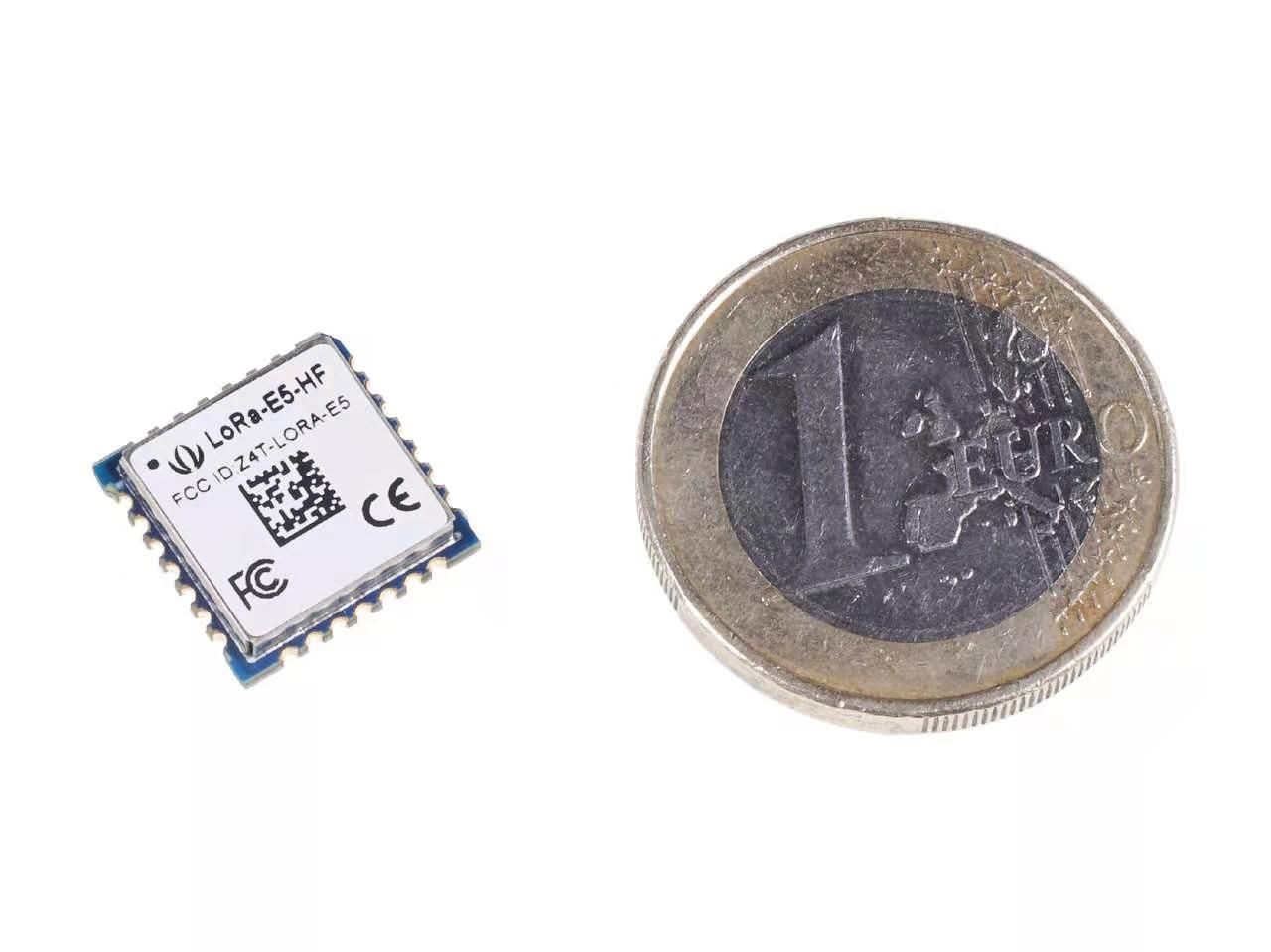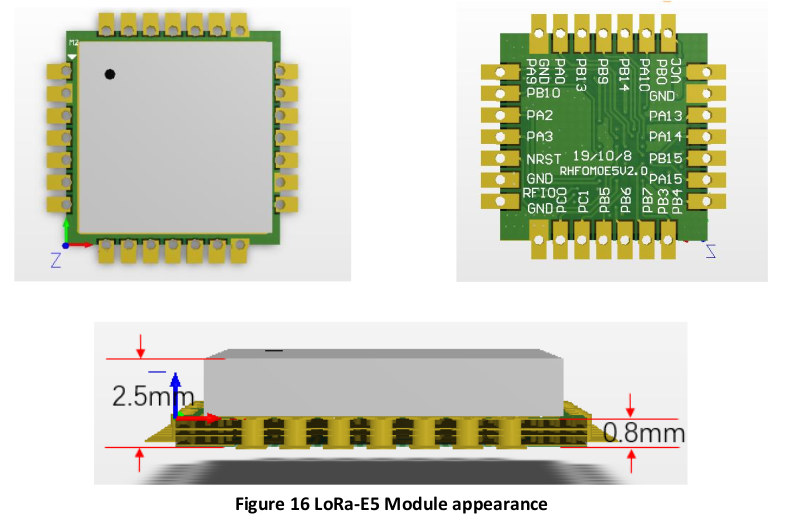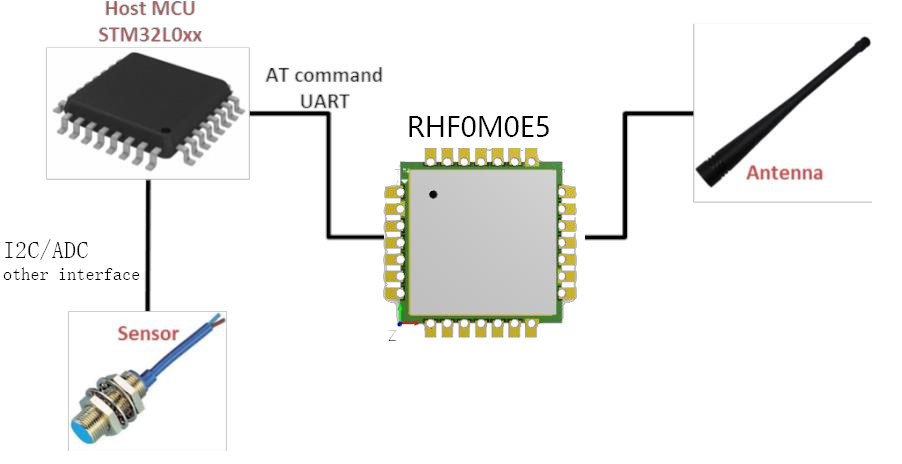Over the years, we’ve seen many LoRa modules combining STM32 microcontroller with Semtech SX12xx wireless transceivers, so that’s probably why STMicro decided to create the first LoRa SoC with STM32WL that was launched last year.
I’ve just been informed a tiny (12x12mm) LoRa-E5 module based on STM32WL LoRa SoC working with 868 MHz and 915 MHz bands had recently launched on Seeed Studio for $9.90.

- SoC – STMicro STM32WLE5JC Arm Cortex-M4 MCU @ 48 MHz with 256 KB flash memory, 64 KB SRAM, SX126x LoRa radio
- LoRa connectivity
- Tx power – 22dBm @ 868/915MHz
- -136.5dBm sensitivity for SF12 with 125KHz BW
- 158dB link budget
- Embedded LoRaWAN protocol, AT command
- Frequency ranges – EU868, US915, AU915, AS923, KR920, IN865
- I/Os – 3x UART, 1x I2C, 1x 12-bit ADC, 1x SPIO
- Supply Voltage – 3.3V
- Power Consumption
- As low as 2.1uA sleep current in WOR mode
- Tx power consumption
- 50mA @ 10dBm (434MHz)
- 111mA @ 22dBm (470MHz or 868 MHz)
- Rx power consumption – 6.7mA @ BW125kHz (434/470/868MHz)
- Dimensions – 12 x 12 x 2.5mm; 28-pin SMT package
- Certifications – FCC and CE
- Temperature Range – -40°C ~ 85°C
Note there are two models: LoRa-E5-LF for 434 and 470MHz bands, and LoRa-E5-HF for 868 / 915MHz bands, and only the HF model is available on Seeed Studio at this point in time.
There’s no easy-to-follow guide for the module just yet, and instead, the company points to STM32Cube MCU package for STM32WL series. The datasheet on Seeed Studio is a little confusing too, as they recommend connecting the module to an external STM32L0 Cortex-M0+ microcontroller to control the chip via AT commands, instead of just relying on the embedded Cortex-M4 core.
This design choice only makes sense if this allows to further reduce power consumption thanks to the more efficient Cortex-M0+ core.
It’s not the first STM32WL module we’ve covered on CNX Software, as we recently wrote about MKR Windy board integrating Midatronics MDX-STWLU-R01 “Windy” module, and indeed there’s no external MCU here, they just use the Cortex-M4 core found in STM32WL SoC. At 12×12 mm, the LoRa-E5 module is quite more compact than the Midatronics Windy module measuring 26 x 16 mm, but the latter already comes with an iPEX antenna connector
Thanks to duxy for the tip.

Jean-Luc started CNX Software in 2010 as a part-time endeavor, before quitting his job as a software engineering manager, and starting to write daily news, and reviews full time later in 2011.
Support CNX Software! Donate via cryptocurrencies, become a Patron on Patreon, or purchase goods on Amazon or Aliexpress






